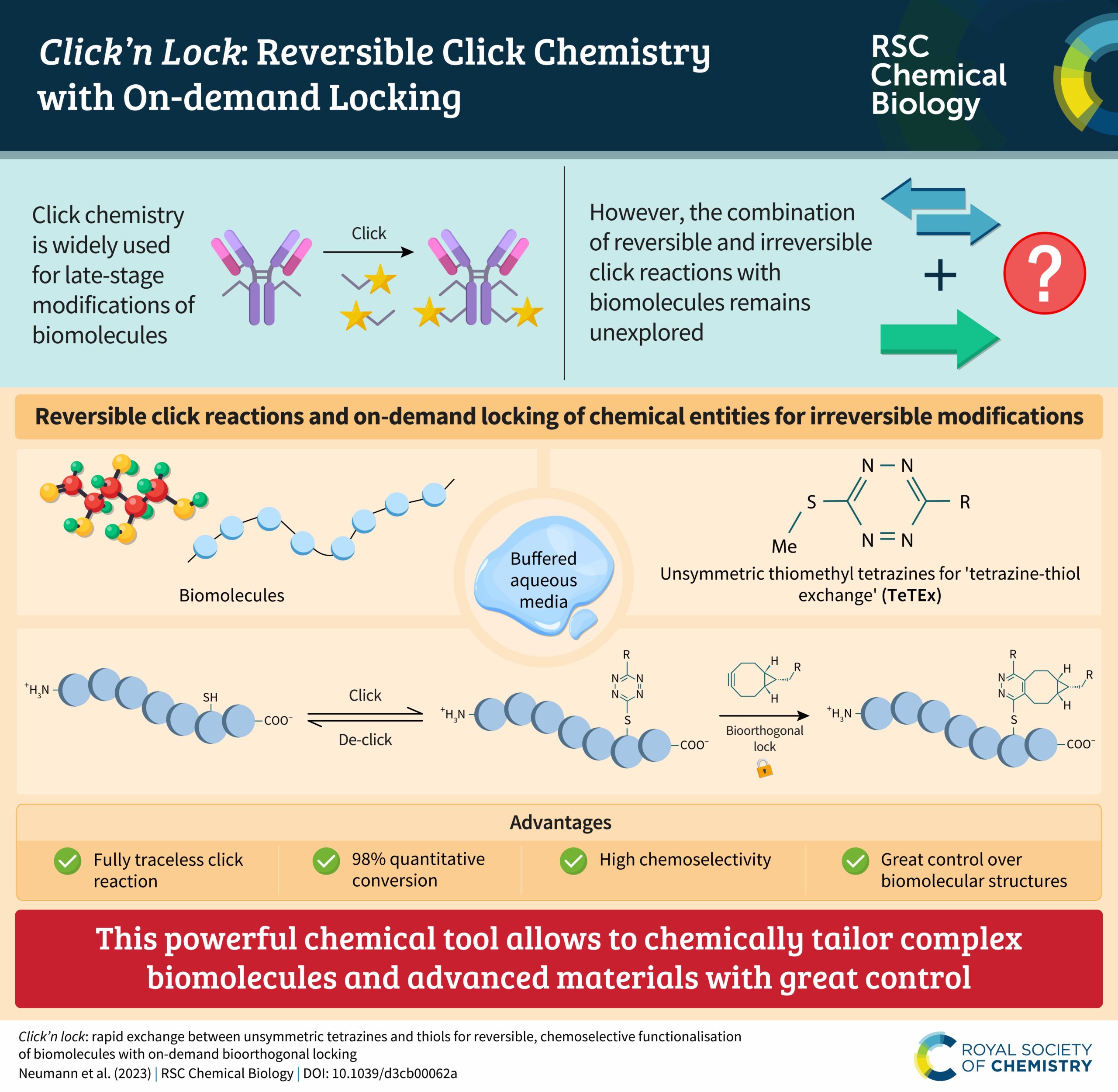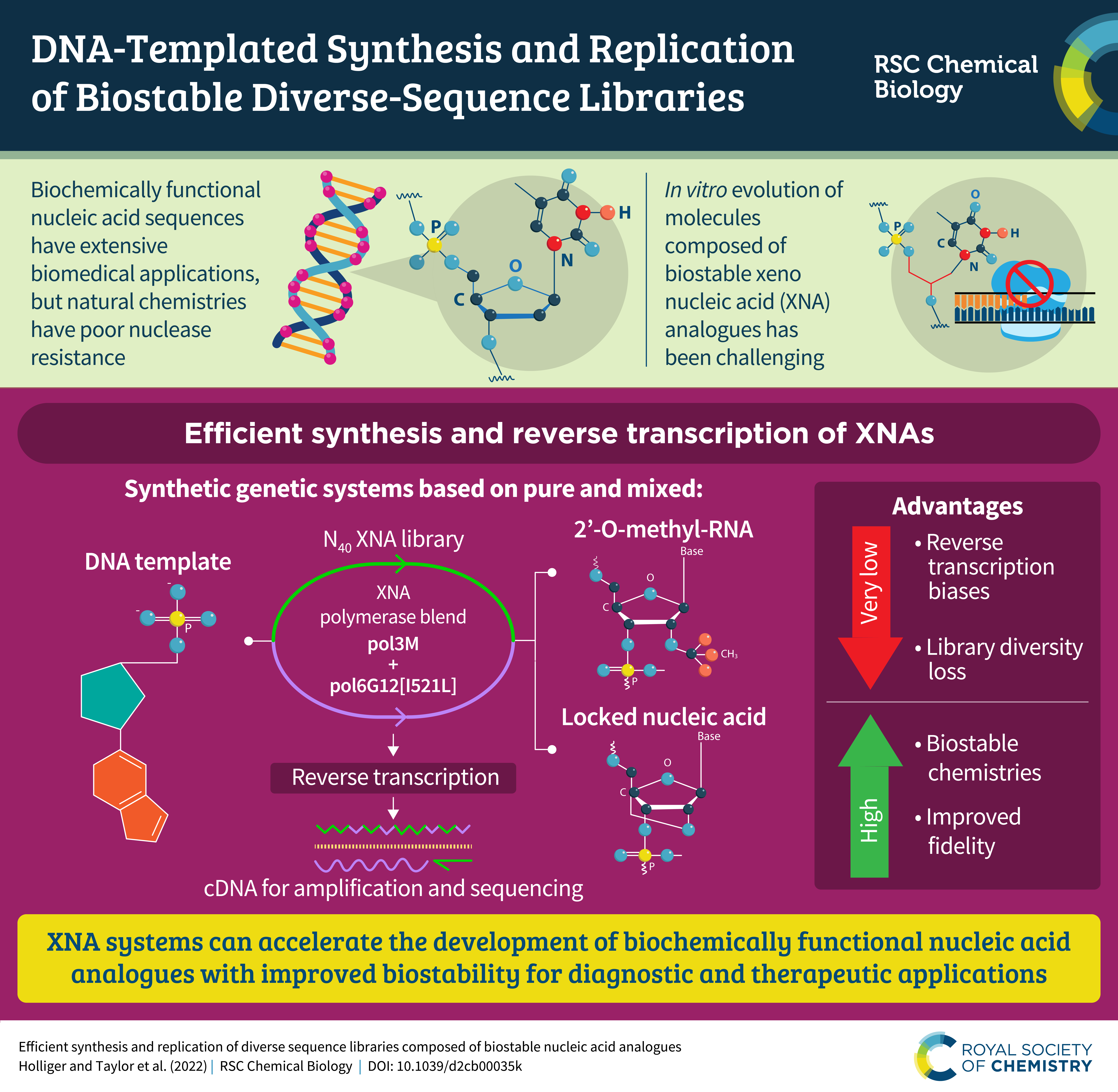About this article:
Click reactions play a crucial role in efficiently modifying complex biomolecules, particularly in the realm of biotherapeutics. The continuous challenge lies in their reversible and irreversible transformations, with chemists seeking ultimate control over molecular structures in dilute conditions and crowded environments.
In this groundbreaking article, we introduce the Click’n Lock principle, describing a novel reaction system capable of seamlessly switching from reversible to irreversible click transformations. Termed ‘TeTEx’ for ‘tetrazine – thiol exchange,’ this concept enables on-demand locking of products using bioorthogonal stimuli (dienophiles), providing a transformative switch from reversible to irreversible attachment.

About RSC Chemical Biology
Led by Hiroaki Suga (University of Tokyo), RSC Chemical Biology is dedicated to publishing and disseminating the most exceptionally significant, breakthrough findings of interest to the chemical biology community. All submissions are handled by our experienced and internationally recognised Associate Editors. For more information on the journal, please visit the journal homepage.
As a gold open access journal, there are no barriers to accessing content and your research article will reach an international audience. Please note that the article processing charges are waived until mid-2022, so the journal is currently free to publish in.
RSC Chemical Biology is now indexed in the Directory of Open Access Journals (DOAJ), PubMed Central, Scopus and Web of Science: Emerging Sources Citation Index. Find out more about the journal and submit your work at rsc.li/rsc-chembio
Royal Society of Chemistry











